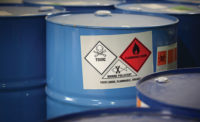For six days, a massive ship called the Ever Given captivated the world as it remained stuck in the Suez Canal. The resulting congestion cost as much as $10 billion a day, slowing global maritime trade. The situation exemplifies how precarious the shipping industry can be, but it also highlights prominent safety concerns.
While no one was hurt in the Suez Canal incident, the situation could’ve been far worse. A harder crash could’ve toppled some of the cargo, endangering crewmates, or even capsized the ship. The conditions that led to the Ever Given running aground could have injured or even killed crewmates, and similar situations have in the past.
The Suez Canal situation isn’t an isolated incident
While ships don’t often get stuck in the Suez Canal, significant maritime accidents are common. There have been more than 900 lost ships in the past decade, with 41 happening in 2019 alone. Many of these resulted from a combination of bad weather and poor management, the same conditions that led to the Suez Canal blockage.
While the shipping industry can’t control weather conditions, better crew cultures can mitigate these situations. Throughout much of the sector, the captain still holds near-absolute authority over their vessel. This consolidation of decision-making power can lead to costly mistakes that collaboration and discussion could’ve prevented.
For example, in 2015, the cargo ship El Faro sank after sailing into a hurricane, killing all 33 onboard. Voice recorder records showed that the captain decided to proceed into the storm despite warnings from crew members. If control of the ship were a more collaborative effort, the team would’ve likely steered clear of the hurricane.
While the exact causes of the Ever Given getting stuck are still unclear, human error could’ve played a role. Records show the ship was traveling at 13.5 knots despite a maximum allowed speed of 8.6 knots.
Risks are rising
The sheer size of the Ever Given is another contributing factor and increasingly common risk. High cargo volume is likely the biggest cause of port congestion, which can delay vital deliveries and increase the likelihood of a crash. As ships carry more cargo and get larger, navigating these small canals and ports becomes riskier.
Stacking cargo higher makes ships more susceptible to the wind, which likely contributed to the Ever Given’s grounding. Similarly, longer vessels have a more challenging time navigating turns in a narrow canal. Since the number of containers a ship can carry has risen by 1,500% in the last 50 years, these risks will likely keep growing.
How shipping safety could improve
Global shipping standards can adapt to these challenges to improve safety. One of the most crucial areas to address is democratization on board a vessel. While the captain should serve as a final authority, if they have too much power, their mistakes can affect the entire crew.
Ensuring smoother communication will also help prevent these errors. Language barriers are increasing at sea, which can make cooperation with diverse crews challenging. Requiring translators or imposing stricter controls on using a common language could help work around this issue.
Equipping ships with newer technology could improve communication between crews and equipment. For example, real-time alerts for malfunctioning systems could help crewmates recognize and address issues before they create safety hazards.
Addressing concerns from high cargo volumes and large vessels can be challenging. One option would be to widen narrow shipping lanes, which many areas have done in the past. Companies could also use smaller ships or more efficient packing systems to maximize capacity while minimizing size.
Global shipping standards must change
The recent Suez Canal congestion highlights two truths about the shipping industry. First, the world is so dependent on this sector that every day of delays leads to considerable losses. Second, something needs to change for shipping to become safer.
The global shipping sector is too crucial for it to ignore the need for improved safety standards. Implementing these improvements will take time and may not be easy, but it will be worth it. Better safety practices could protect lives and save billions of dollars.



